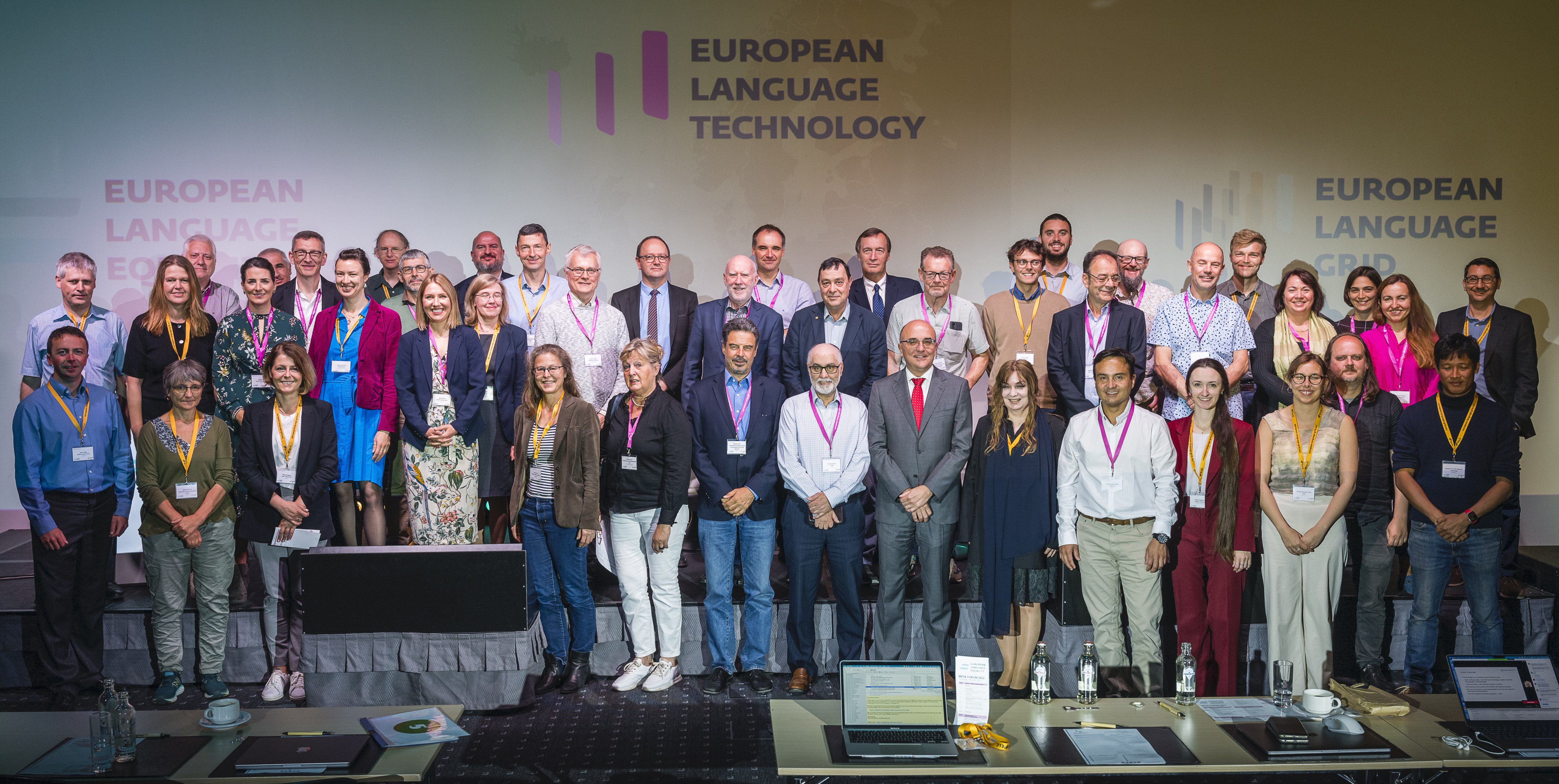-
Overview
With a large and all-encompassing consortium consisting of 52 partners covering all European countries, research and industry and all major pan-European initiatives, the European Language Equality (ELE) project developed a strategic research, innovation and implementation agenda as well as a roadmap for achieving full digital language equality in Europe by 2030. The primary goal of the follow-up project ELE 2 is to revise, extend and further promote the strategic agenda and roadmap.
Despite the META-NET White Paper series reporting on this issue almost ten years ago, technology support for Europe’s languages is still characterised by a stark imbalance. While many resources and technologies exist for English, the majority of other languages suffer from a lack of technology support. The results of the ELE project based on various examination methodologies also indicate the existing imbalance between the European languages. In ELE, we have developed a strategic plan and roadmap to address this situation in a comprehensive way by establishing full digital language equality in 2030 and will revise and extend the strategic plan in the current project ELE 2.

-
Results of ELE
The main tangible results produced by the ELE project are as follows:
- The research partners prepared updates of the 32 META-NET White Papers including the results of an enormous and exhaustive data collection procedure that provides a detailed, empirical and dynamic map of technology support for our languages.
- A number of networks and initiatives (CLAIRE, CLARIN, LT Innovate, META-NET, ELG, ECSPM, EFNIL, ELEN, LIBER, NEM and Wikipedia) produced one report each in which they collected, consolidated and presented their own positions, needs, wishes, demands and visions with regard to Language Technology and the idea of establishing digital language equality in Europe.
- The industry partners produced four technical deep dives for the main areas of Language Technology: Machine Translation, Speech Technologies, Text Analytics and Natural Language Understanding as well as Data.
- These, and a number of additional reports, were used as input for the strategic agenda and roadmap, which will be consolidated in the second half of 2022.
- The ELE project took into account more than 80 languages.
-
Results of ELE 2
The main tangible results to be produced by the ELE 2 project are as follows:
- Additional feedback from relevant stakeholder groups will be gathered to extend and revise the strategic research and innovation agenda.
- The research partners will liaise with national and international funding agencies as well as policy makers to prepare the ground for a joint ELE programme
- The consortium will organise one open call for SRIA contribution projects, which will be financially supported by the ELE 2 project through the Financial Support to Third Parties mechanism; we expect a total number of 8-12 such projects to produce, among others, clearly defined and potentially also implemented use cases and best-practice examples of language resource development and language technology implementations in relevant industry sectors and other areas of life.
- A prioritised list of missing language resources and tools that are needed to level up the technological support for each language covered will be prepared.
- The communication and dissemination activities established in ELE will be continued.
- The ELE dashboard will be further maintained.
- The ELE 2 project will take into account more than 80 languages.
-
Motivation
The ELE and ELE 2 projects are a direct response to the resolution “Language equality in the digital age”, which was passed by the European Parliament in a landslide vote – 592 votes in favour and only 45 against – in September 2018. The report provides more than 40 recommendations, including:
25. Establish a large-scale, long-term coordinated funding programme for research, development and innovation in the field of language technologies, at European, national and regional levels, tailored specifically to Europe’s needs and demands
27. Europe has to secure its leadership in language-centric AI
ELE has developed a strategic plan that provides concrete steps to put the drafted recommendations into action.
-
Collaboration with ELG
ELE started on 1 January 2021 and ran for 18 months. The project ended in June 2022, just like its sister project European Language Grid (ELG), with which ELE closely collaborated, especially with regard to the ELG NCCs, the network of National Competence Centres, and through using and promoting the European Language Grid cloud platform itself for several purposes in ELE. Both projects organised a joint final conference, META-FORUM 2022, held in Brussels in June 2022. ELE 2 started on 1 July, 2022 and will run for 12 months. Further collaboration with ELG are foreseen.
-
Twitter feed is not available at the moment.